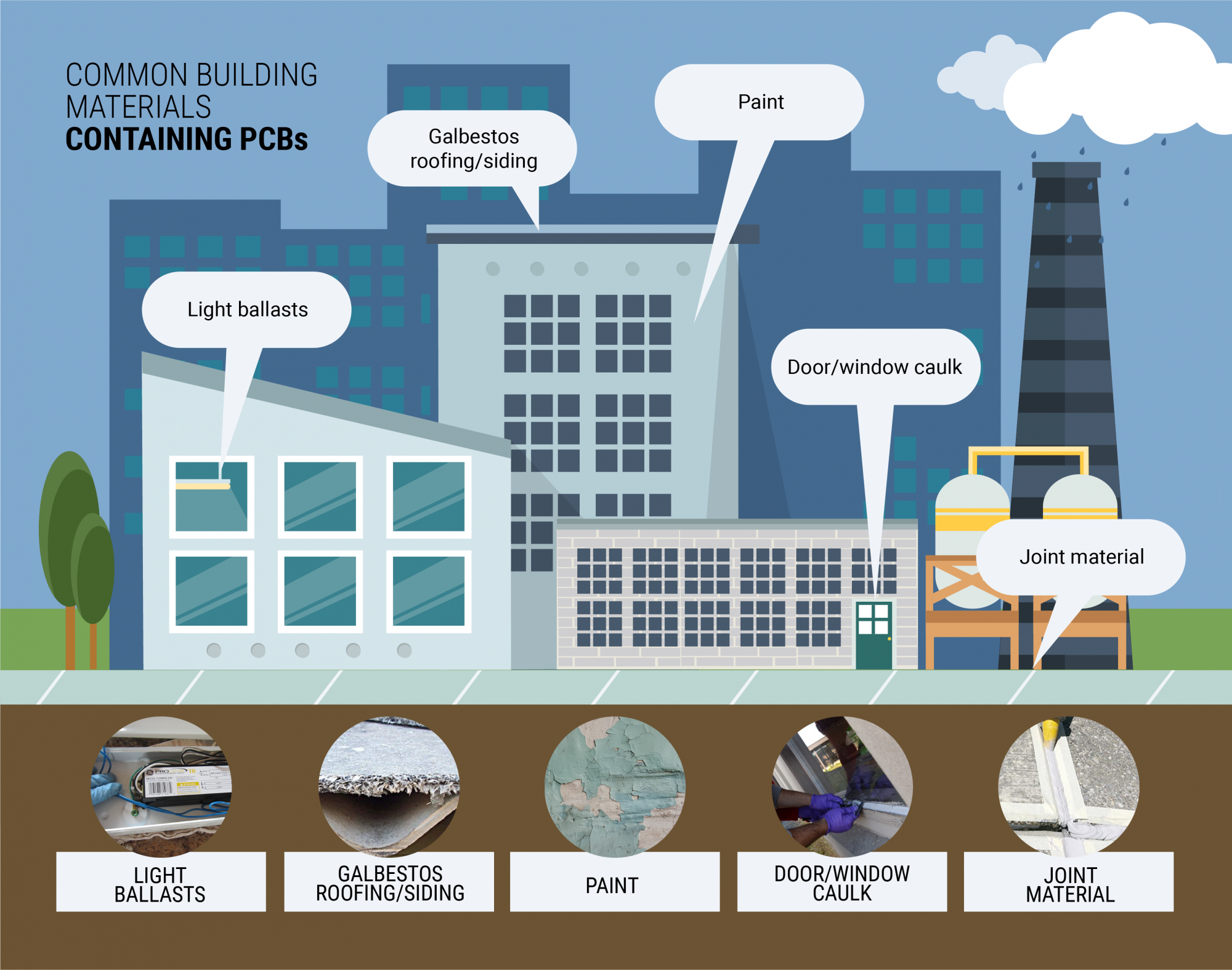Polychlorinated biphenyls (PCBs) are toxic, persistent manmade chemicals that were widely used as an oil additive in electrical equipment and as a plasticizer in building materials. Congress banned the manufacture and use of PCBs in 1978.
Occupational exposure to PCBs
Occupational exposure to PCBs occurs mainly by inhaling it or absorbing it through the skin following contact with contaminated equipment, water, or soil. Occupational exposure might occur during the maintenance or repair of old equipment that contains PCBs, including capacitors and transformers manufactured before 1977. Workers could also be exposed to PCBs during repair or removal of construction materials from older buildings, including plaster, paint, and caulk that contain PCBs.
- If you are working directly with PCBs, such as while doing construction and maintenance tasks, it is possible to carry them home on your clothes, body, or tools.
- You should shower and change clothing before leaving work, and your work clothes should be kept separate from other clothes and laundered separately.
Leaking PCB ballasts are considered an occupational exposure hazard by skin contact.
The PCB Caulking Work Plan provides University personnel with the steps for the removal and disposal of PCB-containing window caulking and glazing compound during routine operations and maintenance activities to minimize the potential for exposure to PCBs.
How PCBs in building materials affect people and the environment
- Precipitation and pressure washing can pollute stormwater with PCBs from building materials, surface soils, and air.
- Construction debris that is disturbed may release PCBs.
- PCBs in air can circulate, contaminate other materials, and affect indoor air quality.
- PCBs in stormwater can contaminate surface water, sediment, and aquatic life.
Health effects of exposure to PCBs
Health effects observed in individuals exposed to large amounts of PCBs include skin conditions, such as acne and rashes, and in some cases have resulted in liver damage in exposed workers. (PCB exposure in the general population is not likely to result in skin and liver effects as they are not normally exposed to large amounts of PCBs.)
The U.S. Environmental Protection Agency and the International Agency for Research on Cancer determined that PCBs are probably carcinogenic to humans, and the U.S. Department of Health and Human Services concluded that PCBs may reasonably be anticipated to be carcinogens. A few studies of workers indicated that PCBs were associated with certain kinds of cancer in humans, such as cancer of the liver and biliary tract.
PCBs at the UW
Before their manufacture was banned, PCBs were used widely in electrical equipment, including transformers.
Many transformers in use still contain traces of PCB-contaminated oil, even after the oil has been changed several times.
It should be assumed that any oil-filled electrical equipment that ever contained PCBs will be regulated. If you are planning a remodel, laboratory move or standard maintenance and alterations, you must have equipment suspected or known to contain PCBs inspected and screened.
Fluorescent light ballasts may contain PCBs and must be managed through Environmental Health & Safety (EH&S). All ballasts manufactured through 1978 contain PCBs. Newer ballasts may still contain PCBs or the carcinogenic chemical DEHP. For these reasons, all fluorescent light ballasts that are not specifically labeled "No PCBs" must be managed as dangerous waste. Report leaking PCB ballasts to EH&S.
- If the contamination is extensive, call the EH&S Spills Advice line at (206) 543-0467.
- Call 9-1-1 if there is an explosion, fire, serious injury or catastrophic leak.
Buildings constructed or renovated between 1950 and the 1970s may have PCBs in the caulk around windows, in weather stripping and in masonry expansion joints. These materials have tested positive for PCBs on UW campuses and in buildings around the nation.
Buildings and structures built or renovated between 1929 and 1979 may also contain PCBs in paint, Galbestos roofing and siding.

Services available
Environmental Health & Safety (EH&S) oversees PCB management, coordinates sampling and disposal, conducts audits, reviews work plans and ensures compliance with regulations.
Guidelines for proper cleanup and disposal of PCBs can be found in the EH&S Hazardous Material Design Guides on the UW Facilities Design Standard website.
EH&S can provide assistance with identifying, managing, and disposing of PCB-contaminated waste.
Incident reporting
UW personnel are required to submit an incident report to Environmental Health & Safety for any work-related event that results in an injury, illness, exposure to hazardous materials, or fire, regardless of the work location.
UW personnel are highly encouraged to submit work-related near-miss events. Visit the Incident Reporting page for more information.